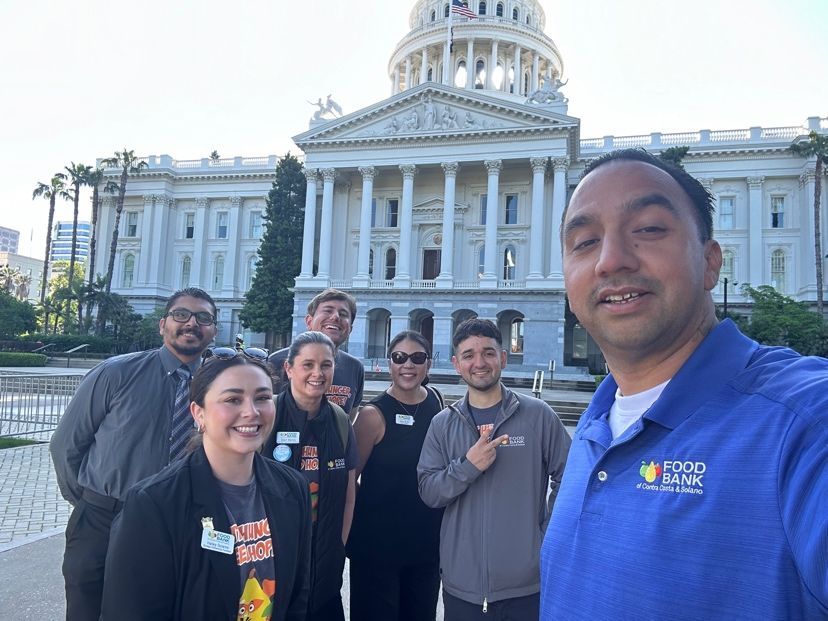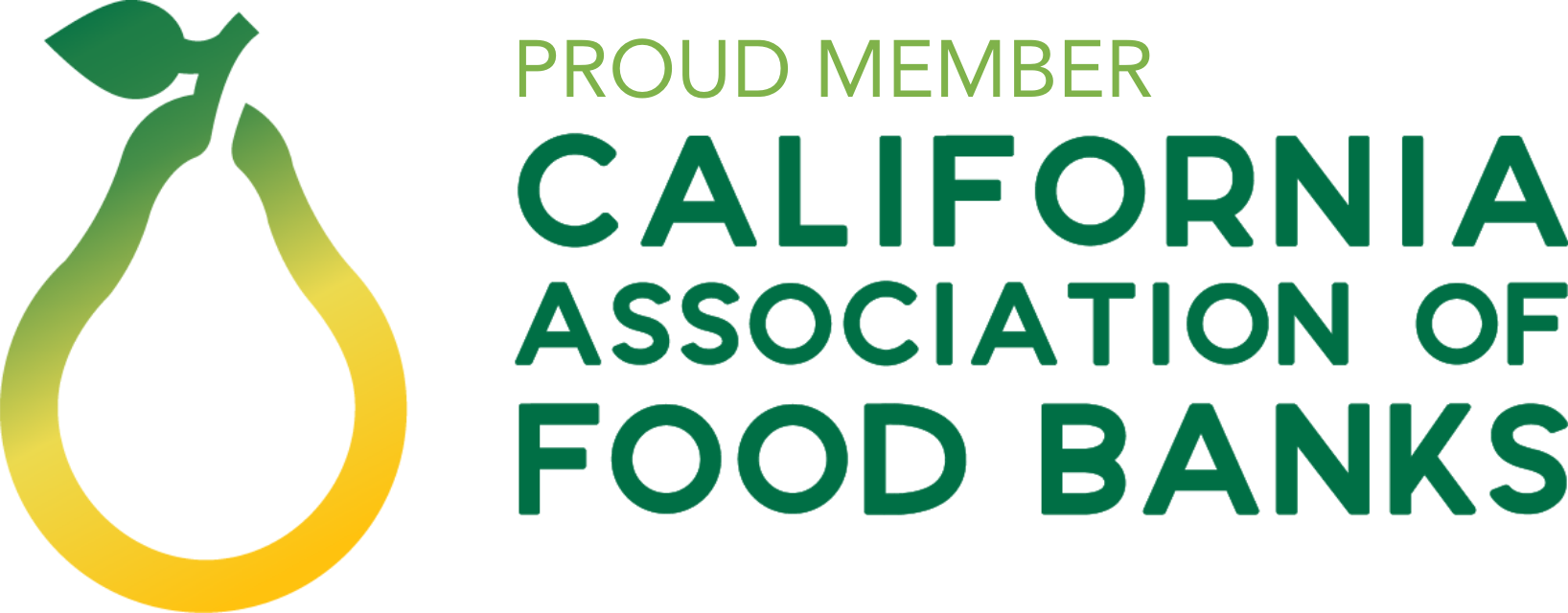Every day, we help neighbors get the food they need to feed themselves and their loved ones. But to truly end hunger, we need to create a community where everyone can access affordable, healthy food.
That’s why we create our annual Legislative Agenda, which highlights bills and initiatives that will improve food access for all. Read on to see how you can join us in advocacy and use your voice to fight hunger!
Our advocacy priorities in 2024
This agenda guides our work with elected officials at the local, state and federal levels to create systemic change that can end hunger for good. To ensure that it reflects the needs of the neighbors we serve, we work closely with our Community Advocacy Partners to build this document each year.
In 2024 we’re staying focused on three goals:
- Maintaining our social safety net
- Strengthening California’s food systems and food banks
- Creating strong hunger-fighting partnerships in our community
Maintaining social safety net programs
Social safety net programs like CalFresh/SNAP (formerly known as Food Stamps) play an incredibly important role in alleviating hunger. For example, for every one meal a food bank like ours distributes, SNAP provides nine meals.
These programs help neighbors experiencing poverty meet their needs, and benefit our community by providing economic stimulus, reducing healthcare costs and more. Keeping them robust and funded is one of our top priorities.
The Farm Bill (Federal advocacy)
The Farm Bill will set nutrition funding levels for the next five years and has a major, nationwide impact on hunger.
On May 1, the House and Senate Agriculture committees released their proposed farm bill frameworks. While the Senate version of the bill protects and strengthens CalFresh (known nationally as SNAP, or food stamps), the House bill proposes steep and troubling cuts.
In fact, the House Farm Bill proposal would slash food benefits by an estimated $3.6 billion dollars in California alone over the next decade. It would also impact Summer EBT and The Emergency Food Assistance Program – which food banks rely on to provide a portion of the food we distribute.
All three of these programs are critical to fighting hunger and making food accessible to our neighbors in need. For every meal a food bank like ours distributes, SNAP currently provides nine. Cuts to these programs will increase the need for Food Banks, and put more pressure on our community to fill this hunger gap.
We’re advocating to maintain funding for CalFresh/SNAP, as well as the Special Supplemental Nutrition Program for Women, Infants and Children (better known as WIC) and other critical hunger-fighting programs.
How you can help: Urge your House Member to oppose these cuts today
State advocacy
These are just some of the bills we are advocating for at the state level. For a complete list, read the full Legislative Agenda.
- AB 1961 End Hunger in California Act of 2024
Establish and convene the End Hunger in California Master Plan Task Force. This task force would recommend strategies to increase access to healthy and culturally-relevant foods and address the root causes of food insecurity in the state.
- AB 2595 School nutrition: guardian meal reimbursement
Create a pilot program allowing summer meal programs to offer meals to caregivers who accompany children to the program site. - AB175 Medi-Cal: medically supportive food and nutrition interventions
Make medically supportive food and nutrition interventions available to all Medi-Cal beneficiaries. Medi-Cal providers can currently opt-in to providing food as medicine interventions, but are not required to offer them. - AB-1968 CalFresh: supplemental nutrition assistance for senior citizens
California has one of the lowest rates of CalFresh/SNAP participation in the country. This bill would require county workers to contact neighbors who meet the eligibility for Supplemental Security Income to let them know what CalFresh benefits they are eligible for as well.
Strengthening Food Systems
We’re working closely with local food producers to ensure California’s food system has the funding and resources needed to meet the state’s growing levels of food insecurity. And, as natural disasters and extreme weather events become more frequent, food banks must have the resources necessary to swiftly respond with emergency food aid.
Federal advocacy
- As part of our Farm Bill advocacy, we’re urging Congress to strengthen funding for The Emergency Food Assistance Program (TEFAP). This program helps produce, dairy and protein move from the nation’s farms to its food banks – ensuring food banks can continue to meet the need in our communities, despite the challenge of high food prices.
State advocacy
- Permanent authorization for the State Emergency Food Bank Reserve would ensure emergency food is immediately available for victims of wildfires, floods and other natural disasters. The reserve has exhausted its supply of emergency food and cannot purchase more without this authorization.
- Increased baseline funding for CalFood would enable food banks to purchase more California-grown foods.
- A one-time $180-million climate and capacity investment would help California’s food banks prepare for the effects of climate change and expand their capacity to ensure we can continue to serve our neighbors.
Partnerships for hunger solutions
We all have a role to play in ending hunger. We’re continuing to build partnerships with other community-based organizations, elected officials and our community members – especially our neighbors with lived experience of hunger – to create and advance solutions that will tackle the root causes of hunger.
Help us advocate for a hunger free-future!
Sign up for The Brief, our monthly advocacy newsletter, to stay up-to-date on our advocacy activities and learn how you can get involved in our work to create a hunger free future.




